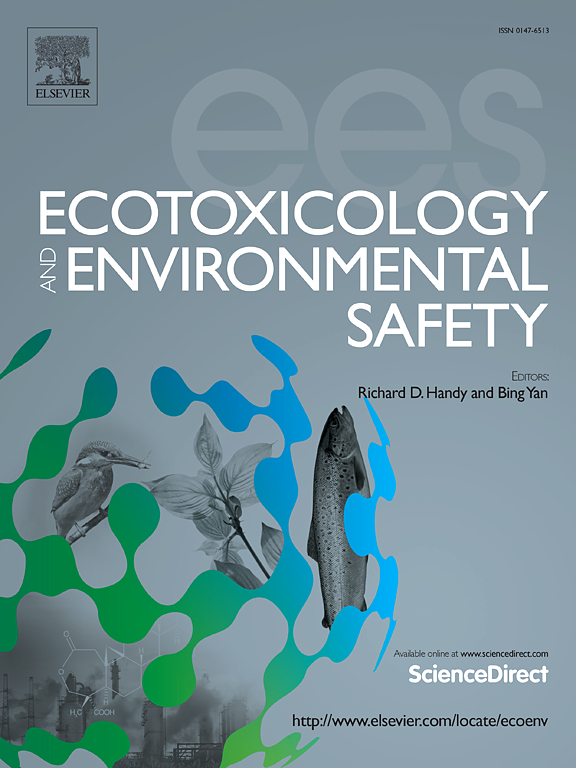Macroplastics in soybean cultivation: Neutral on plant growth but disruptive to nitrogen-fixing microbiome
IF 6.2
2区 环境科学与生态学
Q1 ENVIRONMENTAL SCIENCES
引用次数: 0
Abstract
Macroplastics are an emerging yet underexplored pollutant in agricultural soils, with the potential to disrupt nitrogen (N) cycling through physical interference and microbial community shifts. While extensive studies have focused on microplastics, the effects of larger plastic debris (>2 cm) on soil-plant systems in legume cropping systems remain poorly understood. We conducted a 71-d mesocosm study utilizing 15N isotopic tracing and metagenomic sequencing to demonstrate how macroplastics influence soybean growth and soil-soybean continuum N cycling. Soybean growth was not affected under macroplastics exposure (up to 200 kg ha⁻1). However, macroplastics increased soil NO₃⁻ and NH₄⁺ concentrations, and elevated urease and ammonia monooxygenase activities, suggesting enhanced N availability. Paradoxically, macroplastics significantly disrupted the N-fixing microbial community, reducing the abundance of key bacteria such as Azorhizobium and Bradyrhizobium. Nitrogen fixation pathways (in log10-transformed TPM+1) were markedly suppressed in soils treated with 200 kg ha⁻¹ macroplastics compared to untreated soils (p < 0.001). Our findings highlight the potential risks of macroplastics posing to N cycling and microbial health in agricultural soils. This study addresses a critical knowledge gap by shifting the focus from micro- to macroplastic impacts on biogeochemical cycling.
大豆栽培中的宏观塑料:对植物生长无影响,但对固氮微生物群有破坏作用
宏观塑料是农业土壤中一种新兴但尚未开发的污染物,具有通过物理干扰和微生物群落变化破坏氮(N)循环的潜力。虽然广泛的研究集中在微塑料上,但在豆科作物种植系统中,较大的塑料碎片(2 cm)对土壤-植物系统的影响仍然知之甚少。我们利用15N同位素示踪和宏基因组测序进行了一项为期71天的中观研究,以证明宏观塑料如何影响大豆生长和土壤-大豆连续氮循环。大豆生长不受宏观塑料暴露(高达200 kg ha - 1)的影响。然而,宏观塑料增加了土壤NO₃⁻和NH₄⁺的浓度,提高了脲酶和氨单加氧酶的活性,表明提高了氮的有效性。矛盾的是,宏观塑料显著破坏了固氮微生物群落,减少了氮根瘤菌和慢生根瘤菌等关键细菌的丰度。与未经处理的土壤相比,使用200 kg ha⁻¹ 宏观塑料处理的土壤的固氮途径(log10转换的TPM+1)明显受到抑制(p <; 0.001)。我们的研究结果强调了宏观塑料对农业土壤氮循环和微生物健康的潜在风险。本研究通过将重点从微观转向宏观塑性对生物地球化学循环的影响,解决了一个关键的知识缺口。
本文章由计算机程序翻译,如有差异,请以英文原文为准。
求助全文
约1分钟内获得全文
求助全文
来源期刊
CiteScore
12.10
自引率
5.90%
发文量
1234
审稿时长
88 days
期刊介绍:
Ecotoxicology and Environmental Safety is a multi-disciplinary journal that focuses on understanding the exposure and effects of environmental contamination on organisms including human health. The scope of the journal covers three main themes. The topics within these themes, indicated below, include (but are not limited to) the following: Ecotoxicology、Environmental Chemistry、Environmental Safety etc.

 求助内容:
求助内容: 应助结果提醒方式:
应助结果提醒方式:


